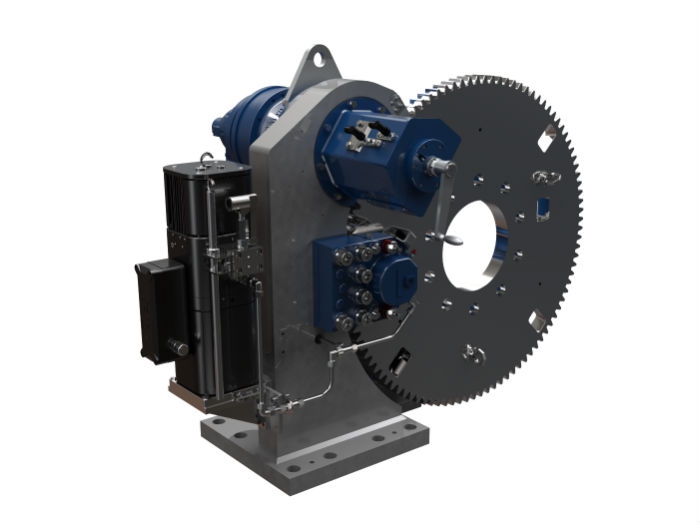
Dellner to introduce new braking system at SMM 2018
Written by Marine Log Staff
AUGUST 28, 2018 — Next week when the maritime industry convenes at SMM 2018 in Hamburg, Germany, vessel owners, shipbuilders, naval architects, and suppliers from around the world will unveil, discuss, and assess some of the latest marine technology. One of those will be leading international brake supplier Dellner Brakes AB, which is launching a brand new range of “plug and play” electrohydraulic braking systems.
Combining the very best of Swedish and German engineering, from Dellner Brakes and sister company Pintsch Bubenzer, the new BUEL STL systems provide a compact, self-contained solution for stopping, turning and locking ship propeller shafts on vessels of all sizes, as well as for industrial applications.
The introduction of the BUEL STL systems follows the Dellner Group’s acquisition of Germany’s Pintsch Bubenzer in January this year.
As the name suggests, the systems combine elements from Dellner Brakes’ innovative stopping, turning and locking (STL) systems with Pintsch Bubenzer’s patented BUEL electrohydraulic thruster / power package. Needing no external piping, the systems are compact, easy to install and, with the BUEL using only half a litre of high performance synthetic oil (compared to seven litres of hydraulic oil in standard hydraulic power units), are cheaper to run and environmentally-friendly too.
Dellner Brakes CEO Marcus Aberg, says,“The new BUEL STL is the perfect solution for customers looking for a high performance, self-contained braking system that’s simple to fit and operate. It brings together the very best of Swedish engineering excellence and German production quality for the benefit of our customers, and we are confident this will be the first of many co-operations between Dellner Brakes and Pintsch Bubenzer. We are very much looking forward to showcasing this exciting new product at SMM, as part of our full portfolio of brakes and clutches for the marine industry.”
Pintsch Bubenzer CEO Markus Topp says, “The development of this new product clearly shows the synergies that can be gained by combining our two companies’ expertise and a collaborative approach to product development. Sales of the BUEL are continuing to grow in the container cranes sector and we are now delighted to be branching out further into the marine market with the launch of this new system. With strong environmental credentials, especially when combined with Dellner’s locking and turning devices, this product is also perfect for a world where environmental concerns are sure to remain high on the agenda.”
At its simplest, the new system combines a Pintsch Bubenzer BUEL Model G, delivering up to 240 bar of pressure, with a powerful Dellner disc brake offering stopping torque of up to 1,026 kN. Customers can then choose to add a Dellner locking device that, available with hydraulic, electric or manual power, can deliver locking force of up to 1,000 kN. Customers requiring a full STL system can then also add a Dellner electrical continuous turning device , which uses an electric gear wheel to move the brake disc and attached shaft to any position – forwards and backwards – or turn the disc continuously, all with variable speed and torque of up to 119 kN.
The stopping, turning and locking functions can be operated individually or as a fully automated system, according to customers’ requirements. There is also a wide range of options for the system interface, from manual hand operation to electronic control panels and even remote wireless operation through a smart phone or tablet – whatever the customer needs.
Dellner Brakes’ STL systems fit around the ship propeller shaft to enable faster directional changes with maximum maneuverability. They also help lower fuel consumption, reduce load on propulsion systems, and make routine maintenance quicker, easier and safer. Securing the propeller prevents damage to the shaft and bearings if the vessel is drifting or buffeted by waves. It also allows ROV’s and divers to operate around the propeller blades in safety. When in harbor, using the turning function to rotate the propeller can also help to reduce marine growth on the blades and lubricated shaft bearings.





Leave a Reply
You must be logged in to post a comment.